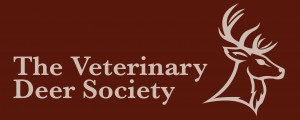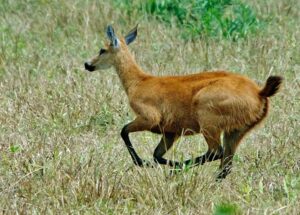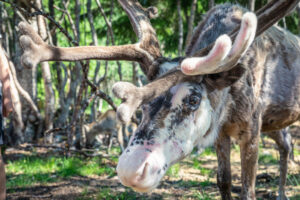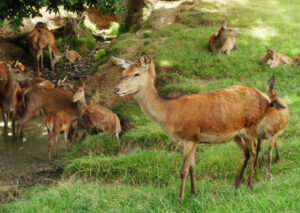Rutting injuries – Tips for vets dealing with farmed deer | Veterinary Deer Society
As we come into the rut, veterinarians may be asked to deal with animals that have become injured as a result of behavioural changes associated with rutting behaviour. There are a few tips for clinicians asked to attend injured deer during the rut:
- Human safety first. Rutting stags are dangerous animals. Even semi-tame stags will dramatically alter behaviour during the rut and will become aggressive. Please ensure that any people dealing with the situation are aware of the risks and that appropriate steps are taken to minimise risks. As the veterinarian you are responsible for the situation and the safety of those assisting you with the examination and procedure. It may be necessary
- Restraint. (either physical or chemical). Most deer farms will have a handling system present to allow you to suitably restrain the animal, however depending on the type and location of injury detailed examination of the area is not always feasible. In instances such as these, or without the presence of a handling system remote chemical injection may be required to sedate or immobilize the animal prior to veterinary assessment.
- Medicines usage. All deer farms should have medicines records present on site and each animal should be identified by ear tag. As there are no licensed medicines for cervids within the UK, as clinicians we are reliant on the cascade for prescribing medicines. Please also note that as these are food producing animals, clinicians must adhere to EU’s pharmacologically active substances list and apply a minimum 28 day (or the licensed meat withdrawal if higher than 28 days) meat withdrawal.
- Consider handling and ongoing care. As farmed deer are much more difficult to handle than other production animals, it may be worth utilising medicines that will minimise the repeated handling of the animal (e.g. longer acting formulations). It is also worth considering pre-empting future problems (e.g. application of suitable fly treatments in the case of open wounds).
- Consider fertility. When dealing with stags, it is important to note the limited window for conception of the hind. If you are dealing with an injured stag it is worth discussing that his sexual activity and fertility may be directly affected by the condition you are treating for. If this is the case the farm may wish to separate off the injured stag and provide a replacement to the hinds to allow for maximum conception rates for the rutting season.
- Behaviour following injury. Especially during the rut, stags and hinds are often likely to bully more sub-dominant animals as social hierarchies are reformed. When releasing an injured animal back into a group that animal is likely to have its status in the hierarchy changed, which often involves fighting, especially in the rut. Therefore consideration must be given to the social group into which the treated animal will be placed and the likely effect this is to have on the animal in question (e.g. further fighting).
- Wild stags affecting farmed stock. Depending on geographical area, there may be wild stags that will test fences and enter deer farm perimeters. Wild stags can be dangerous and it may be necessary to remove the stag from the premises before dealing with the injured animals.
- Euthanasia. Veterinary judgement should be used at all times to determine whether euthanasia is advisable on welfare or safety grounds.
Each individual case is different, however these are some general guidelines to consider for clinicians that are not used to dealing with deer who are asked to attend clinical issues during the rut. If you have any specific questions, please feel free to contact us for further advice.
For a PDF download of this advice, please log in and go to our “publications” section.
As part of its annual programme, the Veterinary Deer Society is undertaking a day of …




